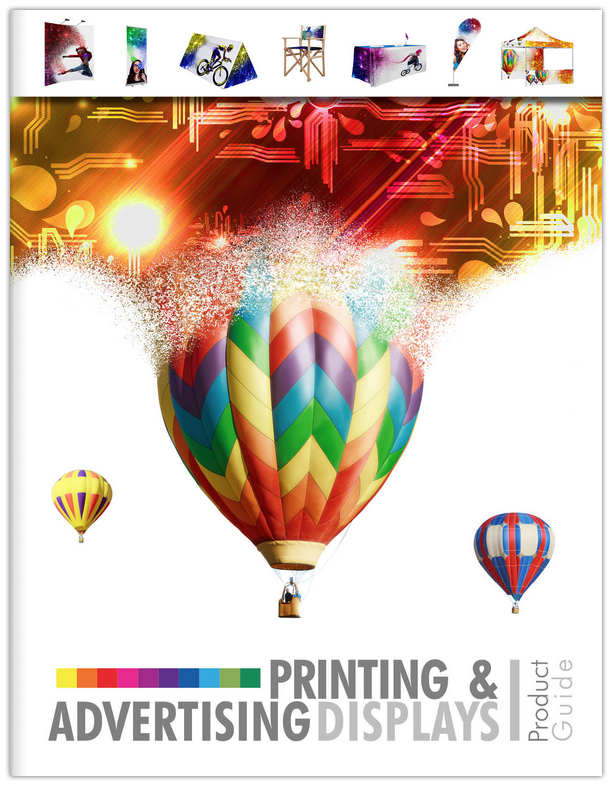
1.800.836.7581
Information & Quote Request
View Our Tradeshow Catalog

Current Promotions
Testimonials & Case Studies
View Our Tradeshow Catalog

Printing & Advertising Displays Product Guide
Learning Center & DownloadsCurrent Promotions
Testimonials & Case Studies
HIDDEN PROCESS BEHIND Great Color
Whether you are looking for a color that is saturated and rich, soft and subtle, or that pops off the page, there is a complex process behind achieving these results that most clients never see. This is why your selection of a printing partner is so critical. Let’s take a look at what happens behind the curtain.
FILE SET-UP
Different types of images (GIF, PNG, JPG, TIFF) handle color differently, so it’s important to get them right. There are also multiple types of PDFs, such as PDF/X1-1 and PDF/4, each of which has different capabilities related to color. For example, some include ICC profiles and others do not.
PRINTING SPECIFICATION
Printers use a wide variety of industry-standard specifications, each of which has an impact on color. These specs include:
SNAP
Designed for newsprint-grade media.
SWOP
Designed for standard commercial offset printing. SWOP has multiple sub-categories to reflect the stock on which the job is printed.
GRACOL
Developed for high-quality reproduction. It, too, has multiple sub-categories that reflect the type of stock.
ISO
An earlier standard still in use today. It, too, is broken down into sub-categories, including ISO coated, ISO uncoated, and ISO newspaper.
Outside America, you have FOGRA 39 (coated stock), FOGRA 48 (newsprint), FOGRA 50 (gloss laminated), and in Australia, 3DAP (3 paper types). In Japan, you have Japan Color (4 paper types).
All of these standards render color differently and give you different looks. It is the job of the printer to match the targets each standard sets.
EVALUATION
How does the printer know we hit the spec you are after? We print a color bar on the output, then measure the patches with a spectrophotometer. This includes gray balance, density, L*a*b* value, and more.
LIGHTING
How color is seen to the eye is influenced by the type of light under which the job is viewed. The appearance of color is impacted by
• Type of lamps used
• Color of the light (incandescent, fluorescent, LEDs)
• Impact of metamerism (color looking different under different light conditions)
• Inclusion of any optical brighteners in the ink or substrate that can react under fluorescent light and create a color shift
So don’t trust your color to just anyone. The methods, standards, and press practices we use to achieve a great end result is the “secret sauce” that makes our production unique to us. It is a process that you can trust!






























